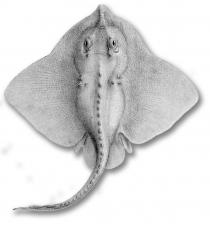Skates lay eggs near black smokers to speed up growth
Deep-sea skates have been found to be laying their eggs at hydrothermal vents, perhaps in a bid to accelerate incubation, according to a study.
Some deep-sea skates lay their eggs in hydrothermal vents, prompting researchers to suggest in a recently published paper that they use the volcanic heat emitted at such locations to accelerate embryo development.
Using a remotely operated vehicle (ROV), a team of researchers surveyed an active hydrothermal field in the Galapagos archipelago, 28 miles south of Darwin Island. As they panned the camera down, they discovered several layers of mermaid purses (egg cases).
According to Charles Fisher, Professor and Distinguished Senior Scholar of Biology at Penn State the multiple layers indicated that "whatever was laying these eggs had been coming back to this spot for many years to lay them. As the dive progressed, we saw more and more of these egg cases and realised that this was not the result of a single animal, but rather a behaviour shared by many individuals."
In all, there were 157 egg cases, four of which were brought to the lab for DNA analysis. The animal that laid the eggs turned out to be the Pacific white skate (Bathyraja spinosissima), one of the deepest-living skate species not typically thought to occur near the vents.
According to the University's press release, "The majority—58 percent—of the observed egg cases were found within about 65 feet of the chimney-like black smokers, the hottest kind of hydrothermal vents, and over 89 percent had been laid in places where the water was hotter than average."
Deep-sea skates have rather long incubation periods, as long as four years. Thus, the researchers concluded that the warmer temperatures in the area could reduce the typically incubation time of the eggs.
“Hydrothermal vents are extreme environments, and most animals that live there are highly evolved to live in this environment," said Professor Fisher. “This study is one of the few that demonstrates a direct link between the vent environment and animals that live most of their life elsewhere.”
The findings of the study was published in the journal Scientific Reports.



